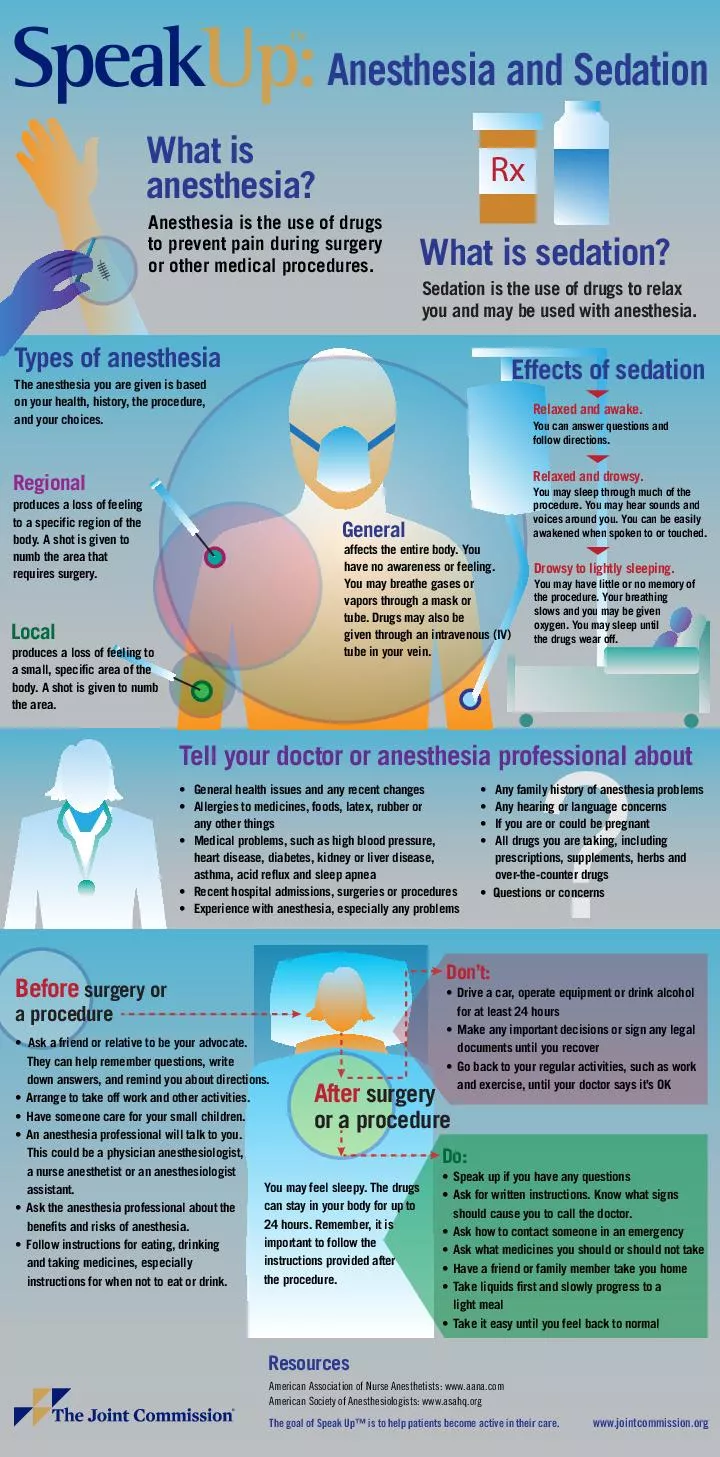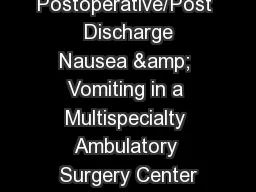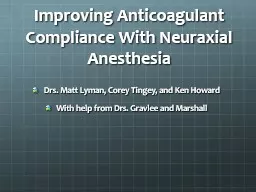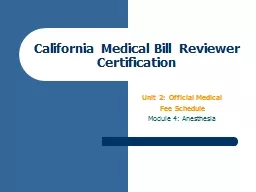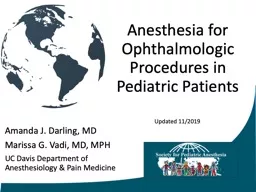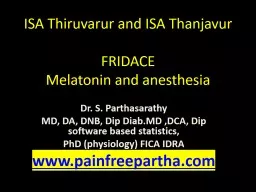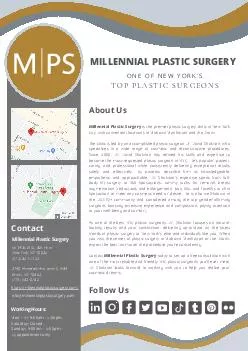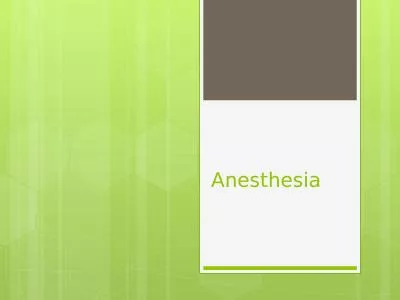PDF-What is anesthesia Types of anesthesia Anesthesia is the use of drugs to prevent pain
Author : lois-ondreau | Published Date : 2015-02-02
What is sedation The anesthesia you are given is based on your health history the procedure and your choices Local produces a loss of feeling to a small specific
Presentation Embed Code
Download Presentation
Download Presentation The PPT/PDF document "What is anesthesia Types of anesthesia A..." is the property of its rightful owner. Permission is granted to download and print the materials on this website for personal, non-commercial use only, and to display it on your personal computer provided you do not modify the materials and that you retain all copyright notices contained in the materials. By downloading content from our website, you accept the terms of this agreement.
What is anesthesia Types of anesthesia Anesthesia is the use of drugs to prevent pain: Transcript
Download Rules Of Document
"What is anesthesia Types of anesthesia Anesthesia is the use of drugs to prevent pain"The content belongs to its owner. You may download and print it for personal use, without modification, and keep all copyright notices. By downloading, you agree to these terms.
Related Documents

